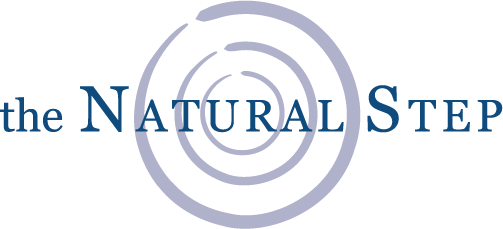The Secret to Employee Engagement on Sustainability: Aim Big and Focus on the Core of your Business

The Natural Step Blog – A Post by Chad Park
Many organizations are trying to uncover the secret to successful employee engagement on sustainability. What we know for sure, is that sustainability efforts that only touch the periphery of the organization will have limited success with employee engagement. For most organizations, so-called greening the office is the road most-travelled, primarily because it’s a fairly simple approach. Deeper change that will engender more meaningful employee engagement is much more challenging.
Recently, the North American Task Force of the United Nations Environment Programme Finance Initiative (UNEP FI) launched a study on environmental employee engagement called "If you ask us...: Making environmental employee engagement happen." The event took place at Scotiabank’s headquarters in Toronto, attended by 50 representatives from North American banks, insurers, and asset managers.
I had the pleasure of addressing the group as a panellist to share The Natural Step Canada’s experience on the value of employee engagement. I shared my view that for a financial institution—or any organization—to truly capture the potential benefit of more engaged employees, their sustainability effort has to touch the organization’s core business.
People are striving for meaning and purpose in their work. Tapping into this in an authentic way is the most significant part of the business case for sustainability. How do I know this? First of all, I always listen carefully when Bob Willard speaks, as he did at this event. Bob’s research shows that a significant and underemphasized part of the business case has to do with human resources: attracting top talent, retaining staff, and improving staff productivity.
There is plenty of other data to back this up, and much of it was presented at the UNEP FI meeting. For example, in a recent study, half of Canadians surveyed said they would be willing to give up some of their salary to work for a company or organization that is well known for being socially responsible.
The question, then, is: “How can an organization capture this advantage?”
Through years of experience helping businesses and other organizations address this question, The Natural Step Canada has learned that it has to be about more than saving paper, recycling, car-sharing, bicycle lockers, and turning off the lights—as important as those things are. They are necessary (to walk the talk), but not nearly enough to really engage people.
The effort has to touch the organization’s core business. This includes its products, services, business partners, and relationships with clients. People have to feel that by doing their job—doing the business of the business—they are contributing to positive change and their efforts are stepping stones toward something greater. This is when employees know that senior leadership has bought into sustainability and that the organization has made an authentic commitment to move toward sustainability. They begin to believe that their personal values are genuinely reflected in the values of the organization.
This is as true for the finance sector as any other. Efforts to green operations are great and important, but the biggest potential lies in meaningfully engaging and empowering your team to innovate new products, services, and business relationships. Businesses must create financial instruments to bring about a more sustainable world.
To do this, a compelling vision of the organization in a sustainable future is vital. More than just a broad, aspirational statement (though those are important too, for communications sake), the vision must be a detailed description of a future state that staff can understand. This helps acknowledge that the organization is not there yet, but that it is reachable. It must help them understand the gap between today and that future vision, so they can see the role that they can play in bridging that gap.
One example I shared with the group was from our experience with Nike. Sustainability efforts took a big step forward when the company became focused on product design and innovation, through a design ethos that became known as Nike Considered. This shifted the sustainability focus from the periphery of the organization to its core and helped align Nike’s innovation culture with sustainability.
The innovation goals that became the guiding “North Star” for Nike Considered helped engage their designers—a group that was not as engaged in earlier sustainability efforts, which were mostly about reducing the company’s negative environmental and social impacts. The employee engagement benefits of becoming “a little less bad” or even “significantly less bad” are limited. Aspiring to some great big goals was much more in line with the “Just Do It” culture at Nike.
The efforts that followed resulted in significant benefits for Nike’s business. Nike has moved from having a niche line of “more sustainable” footwear and apparel to integrating sustainability across their full range of products. By 2015, 100% of Nike footwear and apparel will achieve a base level on their Considered Index.
The story of Nike Considered came to mind recently when reading an interview with David Lawee, VP of Corporate Development at Google, in the Harvard Business Review. “Larry and Sergey are always focused on doing big things,” says Lawee. “Their rationale: if you work on a really hard problem, it's much easier to attract really great people. And if you're working on a hard problem with really great people, then it's much easier to attract resources.”
This is the critical point about environmental employee education: the best business case is to be had when people are engaged in big challenges that touch the core of the business. The goals must be driven by a compelling vision of how the organization can bring about a more sustainable future, and will be most successful when all employees know what role they can play in helping the organization get there.
Now that the secret is out, make sure your organization’s journey toward sustainability is on the right track. Aim big. Focus on the core. And harness the collective energy of your team.
Learn more about how The Natural Step Canada helps large and small businesses achieve sustainability. You don’t have to go it alone. We’re here to help!
About The Natural Step Canada
The Natural Step Canada is a dynamic non-profit organization with over a decade of experience helping organizations and individuals understand and make meaningful progress toward sustainability. We envision a sustainable world in which individuals, communities, and businesses thrive within nature’s limits. We strive to inspire, educate, and connect Canadian leaders to accelerate the transformation toward a sustainable world.
Through award-winning learning programs and our unique suite of advisory, coaching, training, and process facilitation services, we translate the fundamentals of sustainability into practical steps businesses and communities can take to achieve lasting change.
TNS13207

